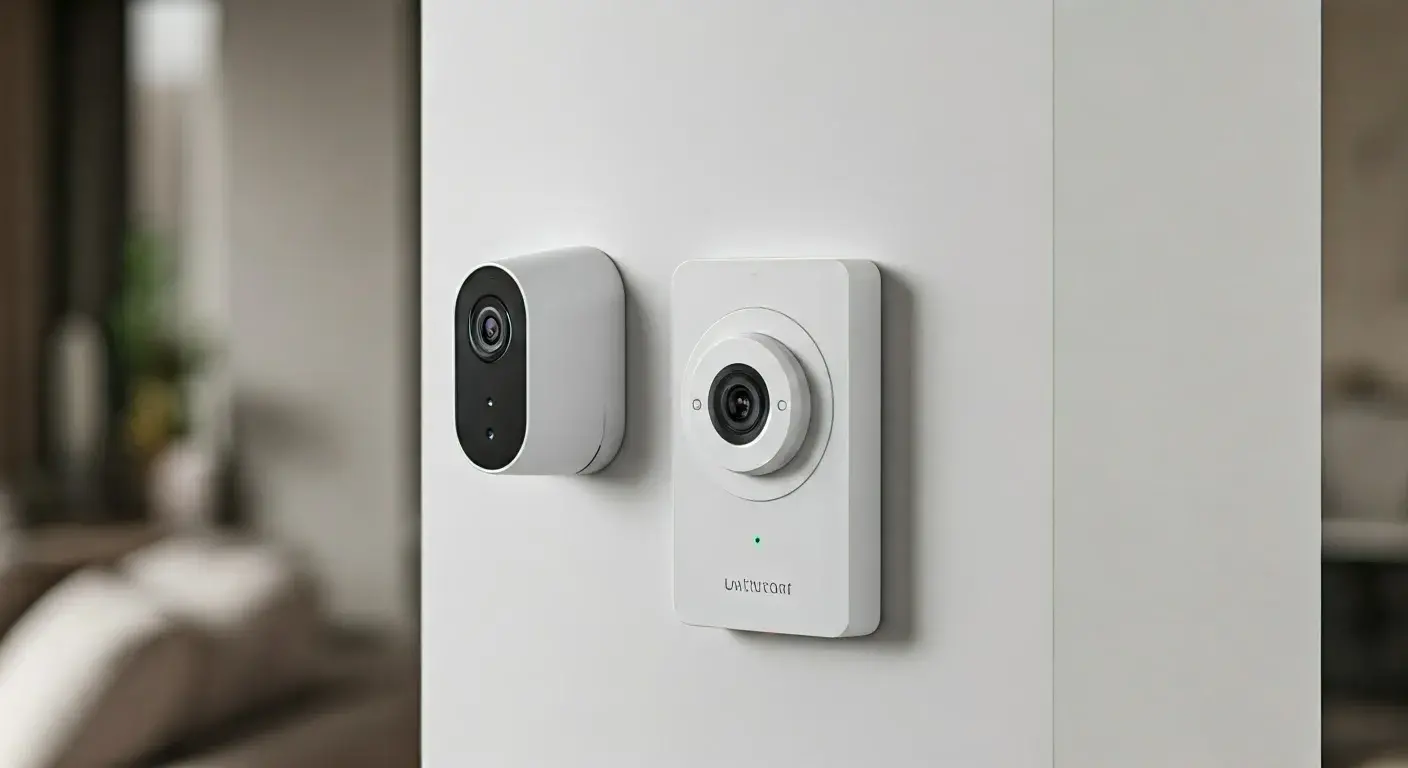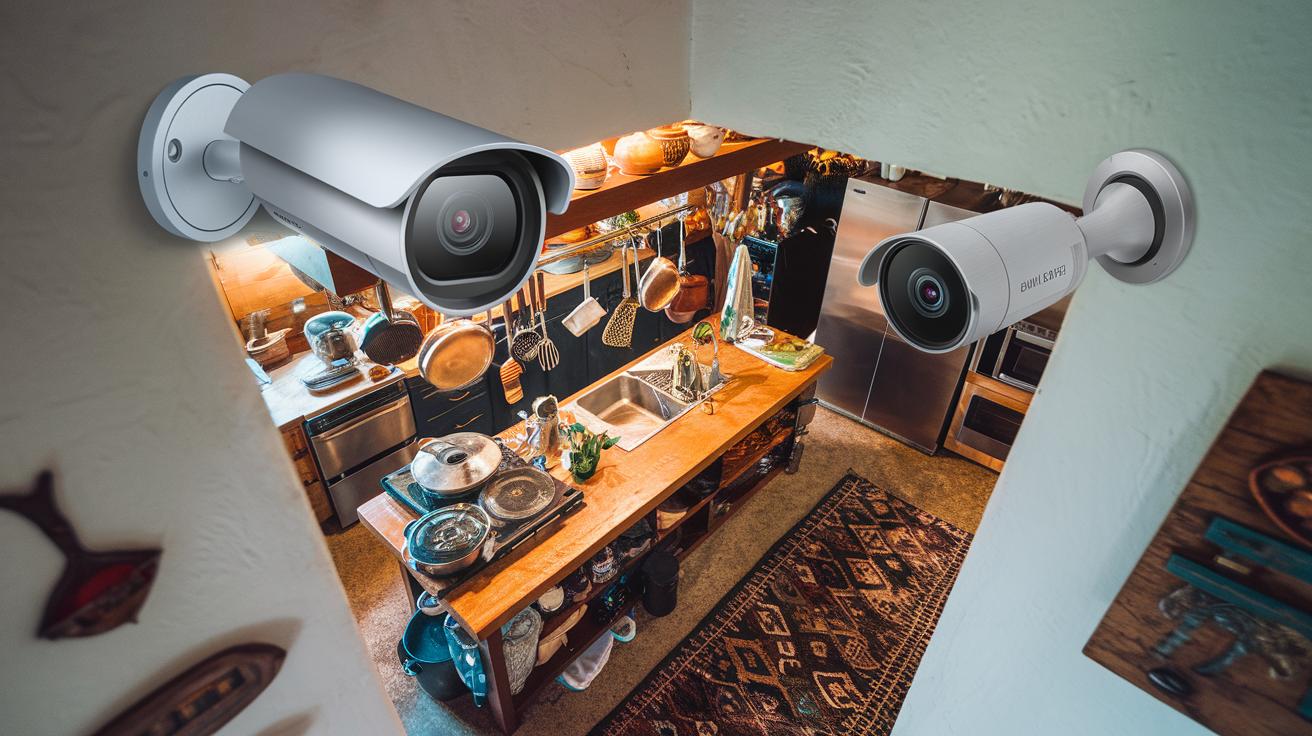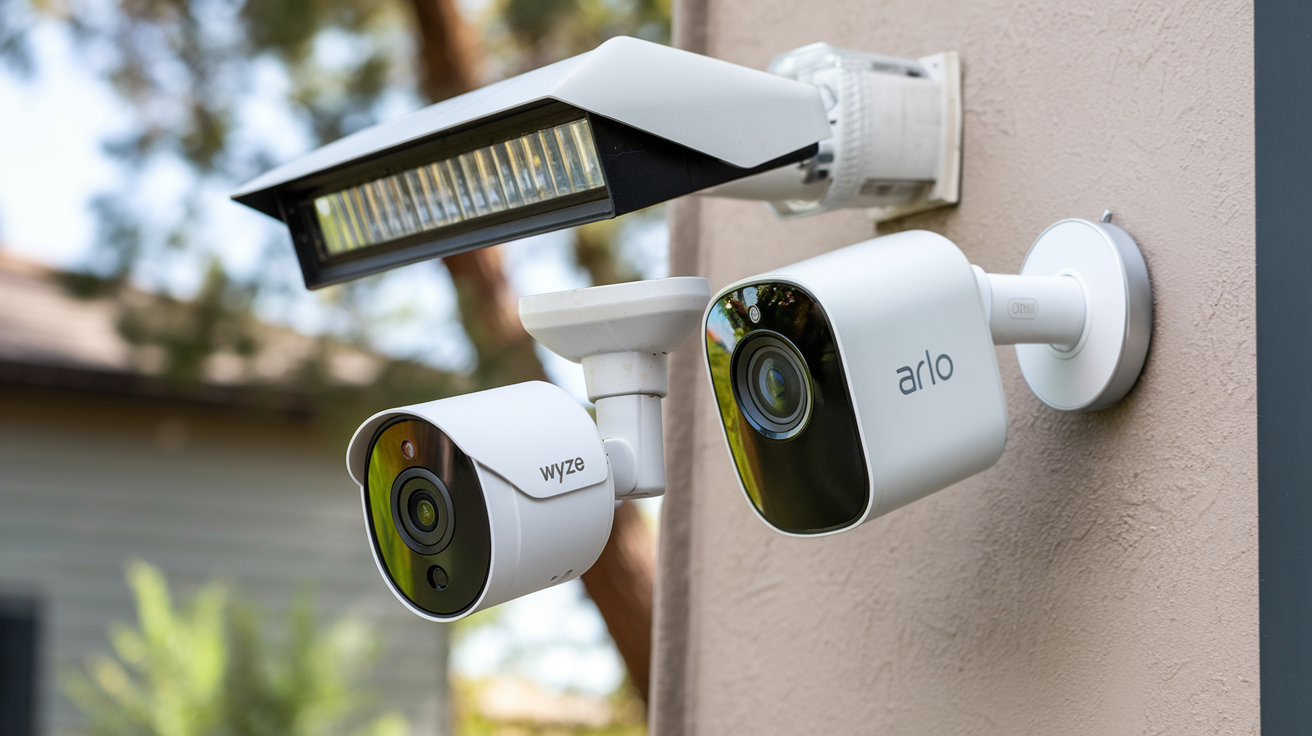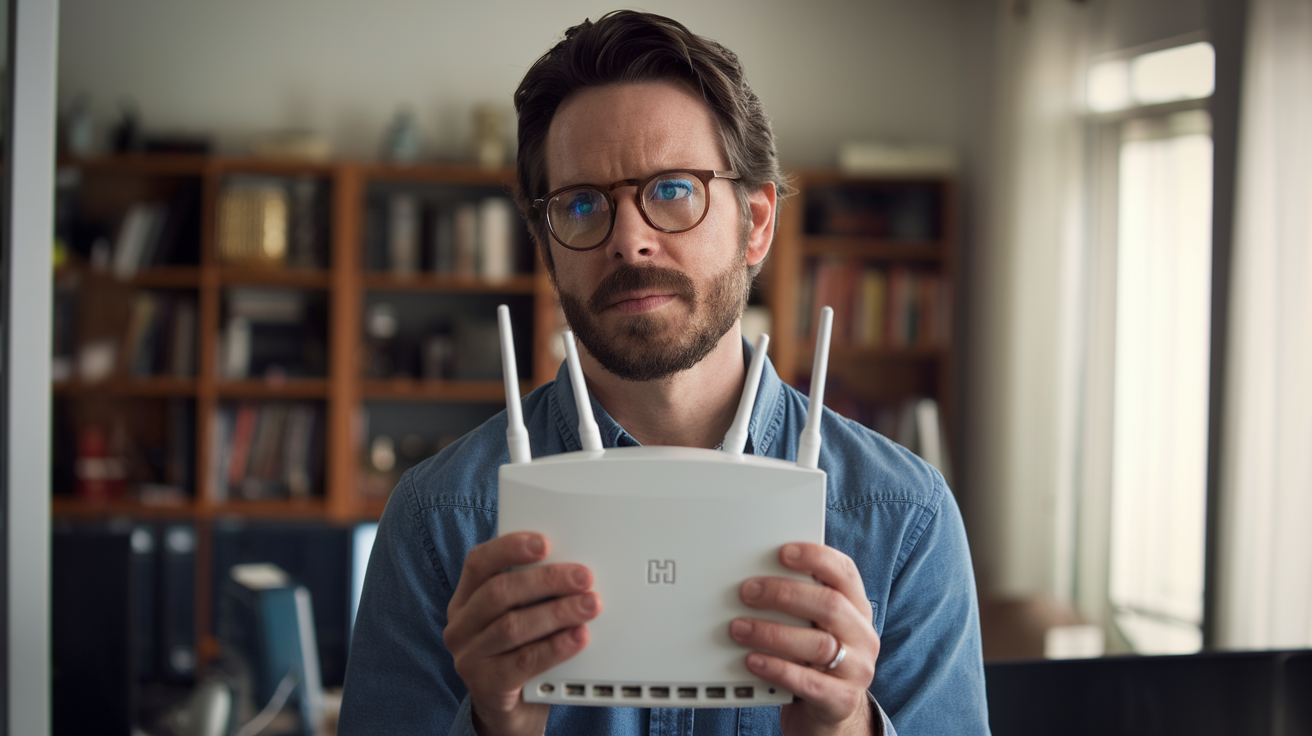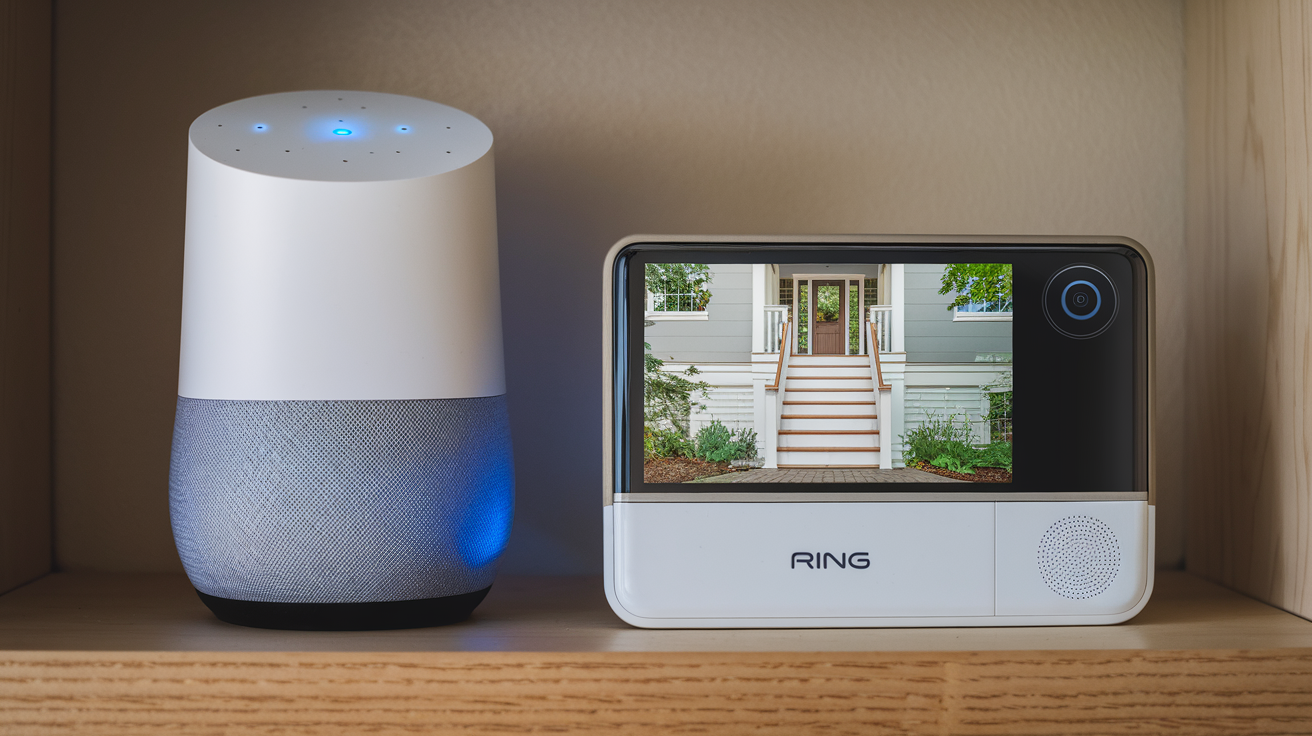Protecting your home and family is very important. Home security systems help you feel safe and calm. While some systems offer professional monitoring and great protection, they can be expensive due to high monthly fees. Luckily, new smart home technology lets you protect your home well without having to pay those fees each month. This guide looks at the best home security systems that give strong protection. You will also gain total control over your security while avoiding regular costs.
Understanding Home Security Systems Without Monthly Fees
Traditionally, home security systems used professional monitoring services. This meant that users had to pay monthly fees for 24/7 help and emergency response. Now, no-subscription home security systems are changing this. These systems allow homeowners to take charge of their security. They provide all the tools and technology needed to watch over and protect their property on their own.
When you choose a no-subscription system, you cut out ongoing costs. You still get many features, like motion detection, security cameras, and remote access through smartphone apps. These systems send alerts right to your phone or device. This way, you can see what's happening and act when you need to.
The Basics of No-Subscription Security Solutions
No-subscription home security systems are based on self-monitoring. You do not have to rely on a third-party service. Instead, these systems let you control your home’s safety. They send real-time alerts to your smartphone or other devices when a sensor goes off or something happens.
One great thing is that there is no monthly fee. However, you need to be aware that you will be responsible for keeping an eye on your system. In an emergency, you will have to call the police or other help on your own.
Still, the flexibility and money saved, along with the control these systems give you, make them a popular choice. Many homeowners want reliable and affordable home security, and no-subscription systems fit that need well.
Key Features to Look For in Subscription-Free Systems
When choosing a system without a subscription, it is important to focus on features that meet your security needs:
- Motion Detection: Look for systems with strong motion sensors. They should be able to spot unusual activity on your property. Make sure these sensors let you adjust their sensitivity to help reduce false alarms.
- Video Storage: Think about whether you prefer local storage on an SD card or if cloud storage is better for saving your security camera videos. Cloud storage may cost more, but it gives you safe backups away from your home.
- Smart Home Devices Integration: If you use smart home products like Google Home or Amazon Alexa, check that the security system works well with your devices. This will help you control everything easily.
Evaluating the Best Security Systems Without Monthly Costs
Navigating the many home security systems out there can be hard. There are different features, prices, and customer support levels to think about. This section looks at some of the best no-subscription systems you can find today. It offers deep insights to help you make an informed choice.
We talk about trusted brands with easy-to-use interfaces. We also mention companies that focus on local storage and privacy. You will learn about the strengths and weaknesses of each option. Our goal is to give you the information you need to pick a system that fits your budget, skills, and security needs.
Criteria for Ranking No-Fee Security Systems
Determining the best no-fee security system means looking at different key factors:
- Ease of Use: A good system should be easy to set up. You should be able to arm and disarm it without trouble. It should also have a mobile app that is simple to use, so you can control it easily.
- Customer Service: No-subscription plans usually do not offer professional monitoring. That's why it's important to have good customer support. They should be ready to help with any technical problems or questions about the system.
- Battery Life: Check that the system's parts, especially sensors, have a long battery life. This helps you avoid changing batteries often and keeps everything running smoothly. It's best to choose systems that have battery backup options. This ensures your property stays protected when the power goes out.
DIY vs Professional Installation Options
Many no-subscription security systems are made for DIY installation. They come with easy-to-follow instructions, wireless parts, and mobile apps that help you set up the system. DIY systems are great for homeowners who enjoy doing things themselves. They also give the pleasure of setting up a security system without help.
Professional installation offers peace of mind. It makes sure your system is set up properly from the beginning. While it costs more, it can be a good investment. This is especially true for tricky systems or for those who want expert help.
In the end, choosing between DIY and professional installation depends on how comfortable you are with technology, your budget, and how complex the security system is.
Top Picks for Subscription-Free Home Security Systems
The market has many home security systems that do not require a subscription. Each system has its special features and strengths.
- SimpliSafe is great for people who like a DIY setup. It is easy to use and has options for professional monitoring.
- Eufy focuses on local storage and privacy. This is a good choice for users who care about data security.
- Arlo offers different camera options and works well with other Arlo devices.
- Abode is compatible with many smart home systems. It is a good pick for tech-savvy users.
- Finally, Ring Alarm stands out because it connects smoothly with the Amazon Alexa system. It is perfect for users who want an Amazon smart home experience.
SimpliSafe: A Comprehensive Review
SimpliSafe is known as one of the best options for DIY home security systems. They also offer a monitoring service if you want it. People like it because it’s easy to set up and use. You can choose to monitor it yourself or have a professional keep an eye on things for extra peace of mind.
The SimpliSafe system includes motion detection, window sensors, door sensors, and a base station that connects everything. It has cellular backup, so it still works during power outages or internet issues. This makes it more reliable.
SimpliSafe provides many add-ons too, like indoor and outdoor cameras, smoke detectors, and glass break sensors. This makes it easy to change and improve your system as your security needs grow.
Eufy Security: Benefits and Drawbacks
Eufy Security is becoming very popular. It focuses on user privacy and local storage. This sets it apart from other systems that use a lot of cloud storage. With Eufy, your video recordings are saved on a base station with a hard drive. This helps reduce the chances of data breaches or privacy issues that can come with cloud storage.
Eufy also offers many features. These include motion detection and facial recognition, and it works well with its cameras and video doorbells. Its low price is a plus, especially for homeowners who want a good and private security system.
However, keep in mind that having local storage means you have to take care of your recorded footage. You are responsible for its security and maintenance.
Arlo's Self-Monitoring Capabilities
Arlo is known for its strong range of security cameras. These cameras give great video recording quality and can be placed in many ways. The Arlo system lets you save videos both locally and in the cloud. This gives you more choices on how to manage your recorded footage.
You can pick a free basic plan that has limited cloud storage. Or, you can go for one of Arlo’s subscription plans for more cloud recording and extra features. With the self-monitoring features, you can watch your property right from your smartphone or computer.
The Arlo system has real-time alerts, motion detection, and two-way audio. This all makes it a complete self-monitored security option. It helps you stay updated and react to events as they happen, keeping your home safe and secure.
Abode: Integration with Smart Home Devices
Abode is a great choice for anyone who wants to set up a smart home. It works well with many smart home devices and platforms. The Abode Iota is especially useful. It acts as a central hub that connects all your security and home automation devices. This gives you control over your whole smart home system.
Abode also connects with popular services like Apple HomeKit, Amazon Alexa, and Google Assistant. This means you can use your voice to control devices, automate tasks, and manage everything easily. With these features, you can create personalized routines that improve security and make your life easier.
You can use a voice command to activate your alarm system, turn on lights when there’s motion detection, or lock and unlock your doors from anywhere. Thanks to Abode's many integration options, all of this is possible.
Ring Alarm: Exploring its Alexa Compatibility
Ring Alarm is known for being affordable and simple to use for smart home security. It is great for people who use Amazon Alexa. Since Ring Alarm is owned by Amazon, it works well with Alexa. You can use your voice to control and monitor your security system.
With Alexa, you can arm or disarm the system, get alerts, and watch live video from Ring cameras. This connection goes beyond just security. You can also manage smart home devices like lights, thermostats, and door locks using the Ring app or by talking to Alexa.
Ring Alarm is a great choice for anyone looking for a cost-effective security system that works with Alexa and fits well into their smart home.
Detailed Reviews of Selected Home Security Systems
We have put together a list of the best home security systems that do not require a subscription. You can find detailed reviews here. These reviews share information about their features, user experiences, and overall value.
We look at SimpliSafe's easy-to-use design and customizable choices. We also talk about Eufy’s focus on privacy. Our reviews show the good and not-so-good points of each system. This information helps you pick the best option for your needs and likes.
SimpliSafe: Features and User Experience
SimpliSafe is known for being easy to use and set up. This makes it a great choice for people who like to do things themselves. The system has a simple design that fits well in any home.
The mobile app lets you control your system from anywhere. You can easily arm and disarm it, change sensor settings, make automation rules, and check event history right through the app.
SimpliSafe's motion detector can tell the difference between people and pets. This helps reduce false alarms and ensures accurate detection of intrusions. With its focus on being simple and easy to use, this system works well for many users. It is suitable for both tech-savvy people and those who want a simple security solution.
Eufy: Privacy and Storage Options
Eufy focuses a lot on privacy. This sets it apart from other security systems that depend on cloud storage. The Eufy system uses local storage through a base station with a built-in hard drive. This means your recorded video stays safe in your home network.
This method of local storage reduces the chances of data breaches. It gives you more control over your data privacy. This can provide peace of mind for users who worry about their sensitive information.
Eufy also has optional cloud storage subscriptions. These let users get offsite backups or have more recording options. Still, its effort to offer a secure and private local storage choice makes it a great pick for those who care about privacy.
Arlo: Camera Quality and Cloud Services
Arlo is well-known for its great camera quality. It gives clear video footage and has a wide view, which helps cover large areas. The cameras come in different resolutions, like 1080p and 2K. This means you can catch even the smallest details.
Arlo's cloud services make it easy to store, access, and manage your video recordings. They offer different subscription plans to fit your storage needs and budget.
These cloud plans include features like continuous video recording, event-based recording, and custom notifications. This way, you get a complete video recording solution that you can access from anywhere with the internet.
Abode: Customization and Automation Features
Abode stands out because of its customization and automation features. This gives you a lot of flexibility and control over your smart home security system. It connects with platforms like IFTTT (If This Then That) to allow many automation options that go beyond just security.
You can set up special rules to trigger different actions. For instance, you could turn on lights when a door opens, get a notification on your smartphone if it detects motion, or change your thermostat using sensor information.
The Abode app is easy to use. It lets you adjust security settings, create different user profiles, and set up automation sequences that fit your needs and lifestyle.
Ring Alarm: Pricing and Value for Money
Ring Alarm is known for being affordable and packed with features. It gives great value for money in home security without requiring a subscription. Its low price and easy setup with Amazon Alexa make it a good choice for homeowners who want to save.
You don’t have to give up any important features for its low cost. Ring Alarm comes with key security parts like a base station, contact sensors, a motion detector, and a keypad.
Additionally, Ring has paid monitoring plans. These are for people who want professional monitoring services. This adds even more value by giving flexibility and keeping costs down.
How to Set Up Your No-Subscription Home Security System
Setting up your home security system without a subscription is usually easy. The designs are simple, and most manufacturers give clear instructions.
First, put your sensors on the doors, windows, and other entry points. This helps to check if anyone tries to enter without permission.
Next, connect your base station to your home's Wi-Fi. This allows the base station to talk to the sensors. Most systems come with a mobile app for control and monitoring. So, download the app and follow the steps on the screen to link it with your base station.
Step-by-Step Installation Guide
- Plan Your Setup: Before you start, think carefully about where to put your base station, sensors, and security cameras. Look at your home's layout, entry points, and the areas that need the most protection.
- Install Sensors and Cameras: Use the adhesive strips or mounting hardware to put sensors on doors, windows, and other entry points. Place your security cameras where they can see important areas.
- Connect to Your Network and Mobile App: Plug in your base station for power and connect it to your home's Wi-Fi. Download the mobile app from the manufacturer to your smartphone. Then, follow the steps on the screen to connect your base station and other parts.
Tips for Maximizing Security without a Monthly Fee
Keeping your home safe takes attention and action, even if you don’t pay a monthly fee. You can boost your security by putting security stickers and signs in your yard. These can help stop unwanted visitors.
Make sure to check your system often. This includes sensors, cameras, and alarms to confirm they are working well. Change batteries when needed, and pay attention to low-battery alerts.
You might also want to buy extra tools like glass break sensors, flood sensors, or smart lights. These can further improve your home security.
The Pros and Cons of Self-Monitored Security Systems
Self-monitored security systems let homeowners take charge of their home security without paying for subscriptions. You can save money by not having to pay monthly fees for professional monitoring services.
Still, you need to consider the downsides. With self-monitoring, you have more responsibility. You must respond to alerts, check for security risks, and take the right actions when needed.
Advantages of Going Subscription-Free
The main benefit of security systems without subscriptions is the large savings they offer over time. Unlike systems that require monthly payments, these only need a one-time payment. This can save you hundreds or even thousands of dollars in the long run.
Plus, they usually have simpler setups. You won't need professional help, making them easier to use. Many of these systems come with easy-to-use mobile apps, so you can easily control your security settings.
Also, many no-subscription systems work well with different smart home devices. This lets you customize your security system and connect it smoothly with your current smart home setup.
Limitations and Considerations
While systems without subscriptions have some good points, they also have limits. You won't have a professional monitoring service. This means you will need to handle alerts yourself and act quickly in emergencies. If there is a break-in, fire, or other threat, you must contact the authorities.
Also, some plans without subscriptions might miss features that professional systems offer. This can include cellular backup or professional installation services.
Before you choose a no-subscription plan, it's important to carefully think about your security needs and budget. You should also consider how comfortable you feel taking on full responsibility for monitoring and response.
Enhancing Your Home Security Without a Subscription
To make your home security system better without a subscription, use a multi-layered approach. This means adding more than just basic parts. You can connect your system with smart home devices to build a proactive security system.
For example, smart lighting can be set up to turn on when sensors notice movement. This can keep away potential intruders and light up paths for better visibility. Voice assistants, such as Amazon Alexa or Google Assistant, let you control your system easily. You can arm or disarm your security system, lock your front door, or check camera feeds just by using voice commands.
Adding Additional Devices for Comprehensive Coverage
While basic starter kits are good for starting your security setup, adding more devices is key for full protection. You might think about getting glass break sensors to notice if windows are broken, especially in spots that need extra security.
Flood sensors can let you know about water leaks. This can help reduce damage and save you from expensive repairs. Smoke and carbon monoxide detectors that work with your system can increase safety against fire risks. They can sound alarms and send alerts to your smartphone right away.
Also, smart home devices such as smart locks, video doorbells, or outdoor cameras can boost your security. They offer real-time monitoring, let you control access remotely, and provide video to check on situations.
Leveraging Smart Home Integration for Enhanced Security
Integrating your no-subscription security system with smart home devices can improve security and create new ways to automate your home. You can connect with smart lights to light up the outside of your house when motion is detected. This helps scare off possible intruders.
With voice control from devices like Amazon Echo or Google Nest Hub, you can easily arm or disarm your security system using simple voice commands.
You can also set up geofencing rules through your smartphone. This helps your system to arm and disarm automatically when you arrive or leave home. This makes your security routines easier and gives you peace of mind.
Future Trends in Home Security Systems
The home security field is always changing due to fast tech improvements and new needs from customers. Artificial intelligence (AI) is becoming a key trend that can change home security in a big way.
AI features, like facial recognition for identifying people, are being added to the latest home security systems. These systems also use anomaly detection to find threats early and intelligent automation to give personalized security responses. This creates a future where home security is more proactive, tailored to individual needs, and smoothly fits into our everyday lives
Technological Advances to Look Forward To
Advancements in smart home technology are quickly changing home security systems. This change leads to a smarter and more connected future. One big trend is edge computing. With edge computing, data processes right on the device, not just in the cloud.
This move to edge computing helps keep your information private. It limits the amount of data sent out and cuts down on waiting time, which means quicker responses to important security issues.
You can also expect to see more AI features. These include better facial recognition technology that helps identify people coming to your home. There will also be smart motion analysis tools that can tell the difference between safe movements and possible dangers.
The Growing Popularity of AI in Home Security
The use of AI in home security systems is changing how we protect our homes. AI systems can learn your daily routine. They can recognize familiar faces and spot anything unusual more accurately.
With facial recognition technology, you can set up trusted user profiles. This means only approved people can enter, while alerts go off for unknown faces. Machine learning helps these systems get better over time. They learn to tell the difference between real threats and false alarms.
The growth of AI features gives homeowners a chance to make their security systems more personal. These systems can fit their needs and preferences better.
User Experiences with No-Subscription Home Security Systems
Real-life stories from people who use no-subscription home security systems show how these solutions can change lives. Homeowners feel happy that they can protect their properties without paying monthly fees.
Reviews from users point out how easy the mobile apps are to use. They also mention how simple it is to set up the systems and how reliable tools, like motion detectors and security cameras, are. These positive experiences show that, if picked wisely, no-subscription systems can save money while being easy to use and still offer important security features.
Real-life Success Stories
Many success stories show how no-subscription home security systems can stop crime and give people peace of mind. Homeowners talk about times when quick alerts and security cameras scared away burglars.
Some share how their systems gave important proof to the police, which helped catch the bad guys.
These real-life examples prove that even though professional monitoring adds safety, choosing self-monitored systems carefully can still protect your home and belongings. They can also provide valuable evidence in unexpected situations.
Common Challenges and Solutions
No-subscription home security systems are made to be easy to use. However, you might face some problems sometimes. A common problem is false alarms. These often happen because the sensors are not placed correctly or the sensitivity is set too high.
To solve these issues, you can move the sensors or change their sensitivity using the mobile app. Another challenge is keeping your system connected to your home's Wi-Fi. This is important for getting alerts and accessing the system remotely.
Make sure to check your network strength and router settings. If you have a larger home or a place with weak signals, you might want to use a Wi-Fi extender. If you need help, contact the customer support for your system for advice or help with specific problems.
Comparing Self-Monitored Systems to Professionally Monitored Solutions
Choosing a self-monitored or professionally monitored security system depends on what you need, what matters most to you, and how much you want to spend. Self-monitored systems save you money because they do not have monthly fees. They give you more control over your security and allow you to customize it the way you want.
On the other hand, professionally monitored systems offer extra protection. They provide 24/7 surveillance, quick emergency response, and the peace of mind that comes from knowing a team of security experts is always ready to help in a crisis.
Cost Analysis: Subscription vs No-Subscription
The main difference between subscription-based and no-subscription home security systems is how much they cost. Subscription-based systems usually have upfront equipment costs and monthly fees for professional monitoring. These fees can range from $20 to $50 or more, based on the provider and what features you choose.
On the other hand, no-subscription options often need a larger upfront payment for the equipment. However, these plans don’t have repeated fees, which can save you a lot in the long run. Over the years, this saving can be quite a lot, making no-subscription systems a good choice for homeowners who want to stick to a budget.
It’s also important to think about extra costs for added features like cloud storage for video recording. Even with a no-subscription plan, these extras might come with monthly or yearly fees.
Decision-making Criteria: Choosing the Right Type for You
Choosing the right home security system is important. You can choose between self-monitoring or professional monitoring. Think about your needs, lifestyle, and budget.
Start by looking at the security risks in your home. Check the crime rate in your neighbourhood and think about your property's size and layout. Look for any weaknesses that could be a problem.
Next, ask yourself if you feel okay with self-monitoring. Are you ready to respond to alerts and contact the police if needed? Or do you feel better knowing there is professional monitoring 24/7? Balancing these points with your budget and needed features will help you make a smart choice.
Legal and Insurance Implications of Self-Monitored Home Security
Understanding the legal and insurance aspects of self-monitored home security systems is important for protecting yourself and your property. These systems have many benefits, but it’s vital to follow local rules and find out how to get the most from your insurance.
Talk to your homeowner's insurance provider. They can help you find discounts for security systems and explain any rules or limits for self-monitored systems. Their knowledge can help you improve your protection and use insurance benefits.
Understanding Liability and Responsibilities
As the main person in charge of keeping an eye on security events, it's very important to know your responsibilities. Self-monitored systems will warn you about possible threats. However, it is up to you to take action, like calling the police if needed.
If you do not respond properly, this could affect your insurance claims or any legal cases. Also, if your system records illegal activities on your property, you need to know the laws about keeping that data, privacy issues, and sharing it with the police.
Make sure to learn about local laws and rules for home security systems. This includes where you can place cameras, what you need for audio recording consent and guidelines for protecting data.
Impact on Homeowners Insurance Policies
Installing a home security system can be good for your homeowner'sinsurance costs. Many insurance companies give discounts for homes with security systems. This shows they see less risk of problems like burglary or fire.
These discounts can be different based on the insurance company, your coverage, and the features of your security system. It is a good idea to talk to your insurance provider. Ask them about possible discounts and share details about your system.
Also, having a security system can help you when you need to make claims for theft, vandalism, or damage. The evidence from your system, like video clips or activity logs, can help support your claim. This can also speed up the process of getting your money back.
Conclusion
In conclusion, choosing a home security system with no monthly fees can give you peace of mind without costing a lot. When you pick the right system for your needs, you can make your home safer. Be sure to think about the advantages and disadvantages of self-monitoring compared to professional services. Also, keep an eye on future trends in home security technology. Whether you pick SimpliSafe, Eufy Security, Arlo, Abode, or Ring Alarm, it is important to set up and care for your system well for the best results. Balancing cost, features, and safety needs is key to making a good choice. Select a subscription-free option that meets your needs for a secure and smart home.
